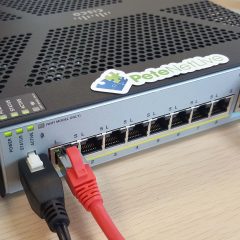VMware – Setting up ESX NTP Time Sync
ESX NTP KB ID 0000798 Problem Having your ESX Server running the correct time is quite important, and before you visit this subject, I would suggest you MAKE SURE the time is set in the ESX Servers BIOS, ie the internal clock is set correctly first. I’ve lost count of the amount of times I’ve seen Windows domains fall over because the ESX host has reverted to its BIOS time and replicated that time to its guests, suddenly your...
Windows – Setting Domain Time
Domain Time KB ID 0000112 Problem If you have arrived here, you have either noticed that the time is wrong on your server(s) or client PC(s), or you have looked in the event viewer and seen one of the following events being logged. Event ID’s 12, 22, 29, 36, 38, 47, and 50. Time Problem Events – On the PDC Emulator Event ID 12 (W32 Time Time Provider NtpClient: This machine is configured to use {text omitted}, but it is...
PDC Emulator: Cannot Sync Time From External NTP Server
KB ID 0001464 Problem I was involved in a question on Experts Exchange this week where the asker could not get their PDC to sync time from an external NTP server. He was seeing an Event ID 12 Error; Time Provider NtpClient: This machine is configured to use the domain hierarchy to determine its time source, but it is the PDC emulator for the domain at the root of the forest, so there is no machine above it in the domain hierarchy to...
Cisco ASA – Configuring for NTP
KB ID 0000608 Problem With NTP, there will be two things you want to do, 1) Allow a device behind the ASA to take its time from a public NTP server, and 2) Set the ASA to take its system time from a public NTP sever (for accurate date stanps on the logs, and for time critical things like Kerberos authentication.) Solution Allow internal host(s) to get system time though the firewall. 1. Connect to the ASA, go to “enable...




